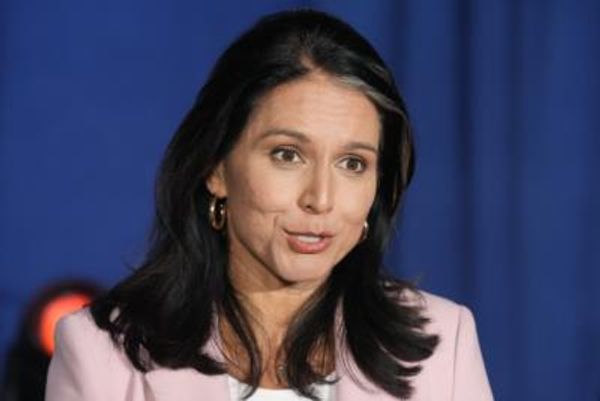
They say don’t tempt the fates, but Elon Musk’s Tesla may be on a roll.
On Friday, shares in his EV manufacturer cracked the $252 mark, a height it hasn’t seen since December, after revealing on Tuesday only a mild drop in second-quarter vehicle sales that beat analyst estimates.
Ahead of its autonomous CyberCab robo-taxi unveiling in five weeks, Tesla bull Dan Ives of Wedbush Securities is now calling the company the most undervalued AI play in the market.
“We continue to believe that Tesla is more of an AI and robotics play than a traditional car company,” he told investors on Friday, adding that “the rubber meets the road as the Street anticipates August 8th as a linchpin day for the Tesla story.”
But before excitement gets too out of hand, it’s worth casting a deeper look at the sales figures that played such a key role in this week’s monster 25% rally, which added over $150 billion in market cap and erased all year-to-date losses. And not everything looks rosy under the hood.
First off, Q2 was effectively a freebie for Musk ever since Tesla announced in April it was accelerating the launch plan of new models from their previous mid-2025 timetable.
If the company whiffed on expectations, investors could justifiably argue it doesn’t matter since the arrival of fresh new product is only months away. If volumes matched or exceeded consensus, it would show Tesla remains the dominant EV brand in the world even without them.
In other words, heads bulls win, tails bears lose.
No, I'm not worried. This is a suckers rally and it's overbought. Auto numbers were good but not good enough for 30% rally. Plus, $TSLA doesn't want to be an auto company so the rally on autos is kind of ironic and comical. It's deserved on finally hitting deliveries but they…
— squawksquare (@squawksquare) July 3, 2024
Rare upside surprise
Analysts who repeatedly update their forecasts had estimated sales of around 425,000 vehicles, a steep 9% drop over the previous year’s level. Instead, Tesla delivered 444,000.
It’s unusual since Tesla—being worth more than the next eight largest carmakers put together—is scrutinized by a small army of investors, complete with accounts that track container ships full of Teslas departing from Shanghai’s port to those that operate drone flyovers around its Texas manufacturing plant.
In addition, forecasters only have to follow the midsize segment since 95% of its volume comes from either the Model Y crossover or its sibling Model 3 sedan that share many of the same parts to reduce costs.
Moreover, there is data coming out of China every week, and even Europe’s 30-odd markets provide a monthly update on Tesla sales. In theory, Tesla shouldn’t be capable of a big surprise so long as its build rate matches customer orders.
Why is this necessarily a cause for caution?
In recent quarters, however, the gap between production and sales has widened with Tesla building 46,500 more cars than it delivered in the first three months of this year. While this generates the growth investors demand, it consumes precious resources.
Analysts had worried this might continue since a car model’s sales tend to only go in one gradual direction—down. As it ages, it typically finds it harder to compete in the market against newer rivals, not easier.
That helps explain why Q2 production hit its lowest three-month figure since Q3 of 2022. Throttling output to 410,000 is a clear reaction to demand weakening, especially since the first three months of 2024 already saw interruptions in production owing to a model changeover in Fremont, Calif., and an arson attack on its Berlin plant.
Meanwhile, Tesla offered Americans a teaser rate of 0.99% in May for customers looking to finance the purchase of a vehicle. That offer has since expired, however.
“There is a potential that some of the tricks that were deployed in Q2 to pump these delivery figures—specifically some of those interest rate offers—are now no longer available at all, which makes me think that there was a little bit of a desire to really solidify a bottom,” Tesla bull Kevin Paffrath, who manages the Pricing Power ETF, told his 2 million subscribers on YouTube.
Or take Europe, where data published on Friday suggested June was the carmaker’s best month so far this year as customers rushed to lock in lower prices ahead of punitive EU tariffs on Chinese-built EVs that took effect this week. Either Tesla pays the tariff itself, or it will be under pressure to sell even more in China to offset the loss.
This could result in third-quarter weakness.
What does this mean for Q2 earnings?
Tesla is due to report preliminary figures on July 23, and here things ought to look rosy in part because Tesla has reduced headcount so heavily in recent months.
More Q2 deliveries than expected also means more revenue recognition and thus more earnings, so analysts will likely be raising their estimates for the quarter and with it the year.
Moreover, Tesla deployed more than twice as many stationary commercial batteries over the first quarter, so its contribution could mean an extra $400 million in quarterly gross profit.
Then there are its finances. By liquidating inventory, Tesla releases much needed cash: Last quarter saw it burn through $2.5 billion, the first drawdown since the COVID pandemic erupted in Q1 of 2020.
And this boost could prove a big help. Assuming the average transaction price per car remains flat at $45,000, the 33,000 unit drawdown from its stock of unsold cars adds an extra $1.5 billion in cold hard cash in the till.
The question is what kind of incentive did Tesla have to offer to move that metal off its lots, which would dilute its profitability. In the past, investors have focused more on its automotive gross margins than its absolute earnings as a metric for sentiment in the stock.
“Discounting, discounting, discounting,” says Matthias Schmidt, an independent industry analyst in Germany who specializes in the EV market. “They’re desperate to keep their growth narrative on track because any indication it’s coming to an end will impact their stock price.”
What’s next?
July 23 is just the warm-up. The main event is on Aug. 8, when Tesla is scheduled to reveal its CyberCab, a dedicated robo-taxi model expected to lack a steering wheel and pedals.
Investors will be keen to know specifics on when and how it might be rolled out, since JPMorgan learned last month it might not be ready for production until 2027 based on conversations it held with the company.
As a result, Canaccord Genuity analyst George Gianarikas says he will be focusing in on any data points Tesla may provide in its Q2 earnings report regarding the Full Self-Driving (FSD) take-rate after its recent free trial.
“It will be really important to see how many people opted in and bought that software this quarter. That is the key to the near-term story,” he told CNBC this week.
Just as important, Tesla is expected to have more than one surprise in tow that day. It announced in April plans to accelerate the launch of new models, including more affordable ones, that need not require new factories. As a result, all talk of constructing a Giga Mexico plant in Nuevo Leon has vanished, let alone negotiating a new one to be located in India.
Should it fail to show up with at least one new vehicle ready to launch by the start of next year, investors might once again worry how Tesla will lift its total annual sales volumes of around 1.8 million vehicles to match its current capacity of nearly 3 million.
Ironically, even though Musk wants to rebrand Tesla as an AI and robotics company, it still has to earn a living selling cars for now, and this week’s market rally was the best proof of that.







